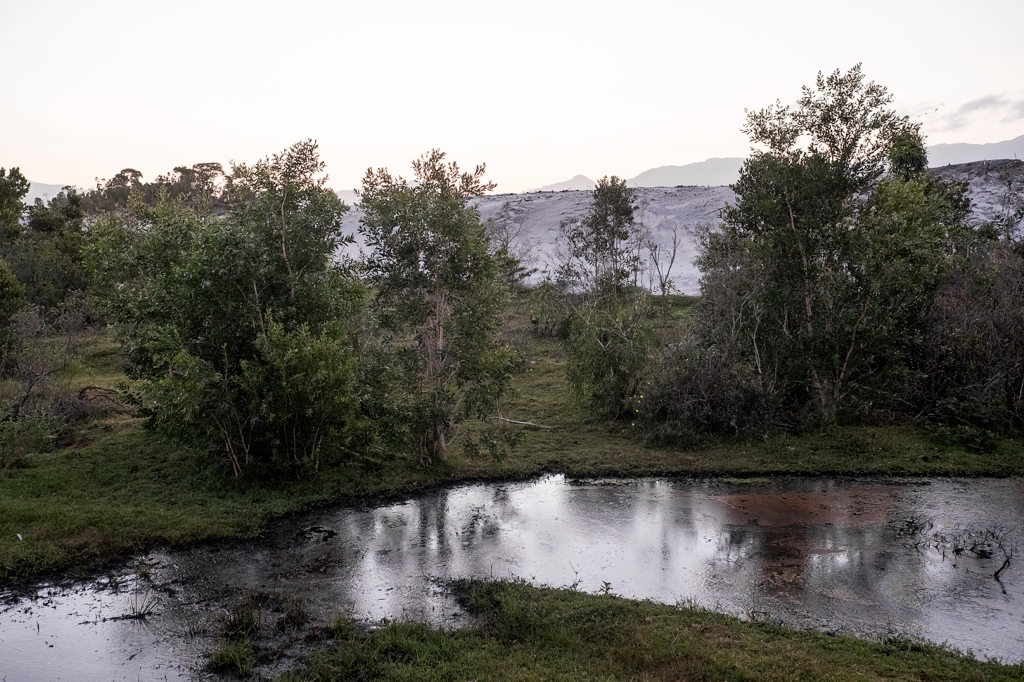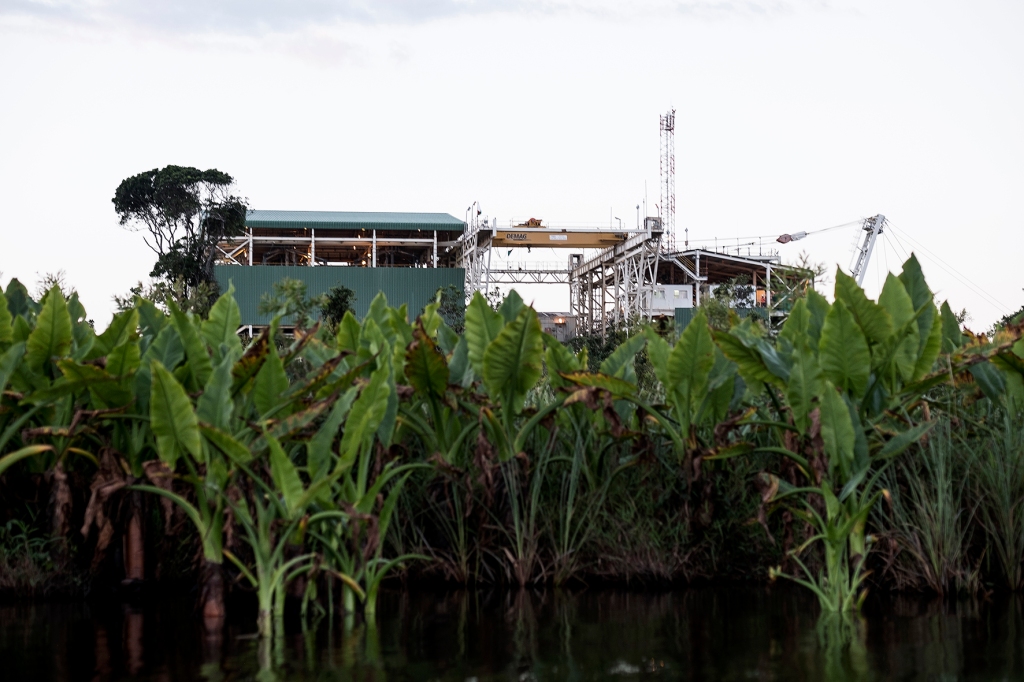In order to extract the minerals, RioTinto QMM must clear the trees, flood the land and then dredge it. To control water flow, they constructed a weir (196-meters) across the embouchure, blocking the ocean water. Once flooded, mining ponds are created and a machine (60mx40m) pulled by a boat is dragged around the site to extract ilmenite, zircon and monazite. Mining operations in Madagascar are legally required to maintain an 80-meter undisturbed buffer zone from any natural water body (!) (1).
The weir which blocked the ocean and its bounties from the water system has had ramifications. Villagers recount how a few months after its construction, the aquatic plants living on the lakes’ bed died. Then, the water color started changing, the daily fish catch decreased and the species’ variety diminished from 40 species in 2005 to less than 9 species today as per Racharles, a 32 year old fisherman. In addition, it elevated the water level of the lakes flooding the rice fields on the canals stopping rice cultivation in the area.

From the extracts, monazite is a reddish-brown phosphate mineral containing rare earth metals and thorium – a highly radioactive metal that could be used as a replacement for uranium in nuclear power generation. The extraction process concentrates the radionuclide content of the residue of ore (tailings) and should be disposed of 15-meters below the surface. However, RioTinto QMM piled the mine tailings to construct a berm 30-meters wide 4-meters high on top of the buffer zone (2).
.
.
.
